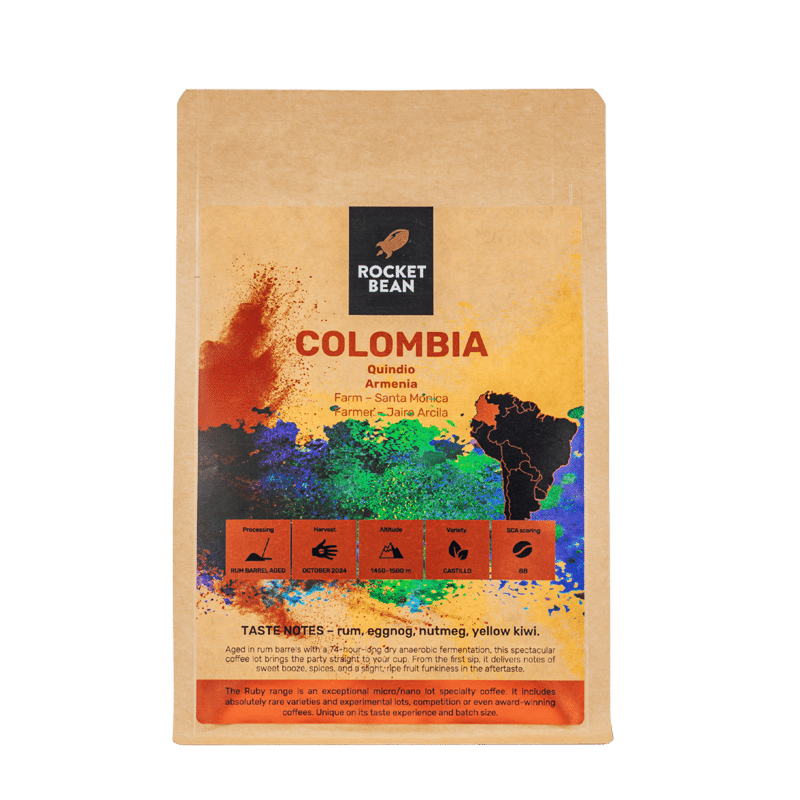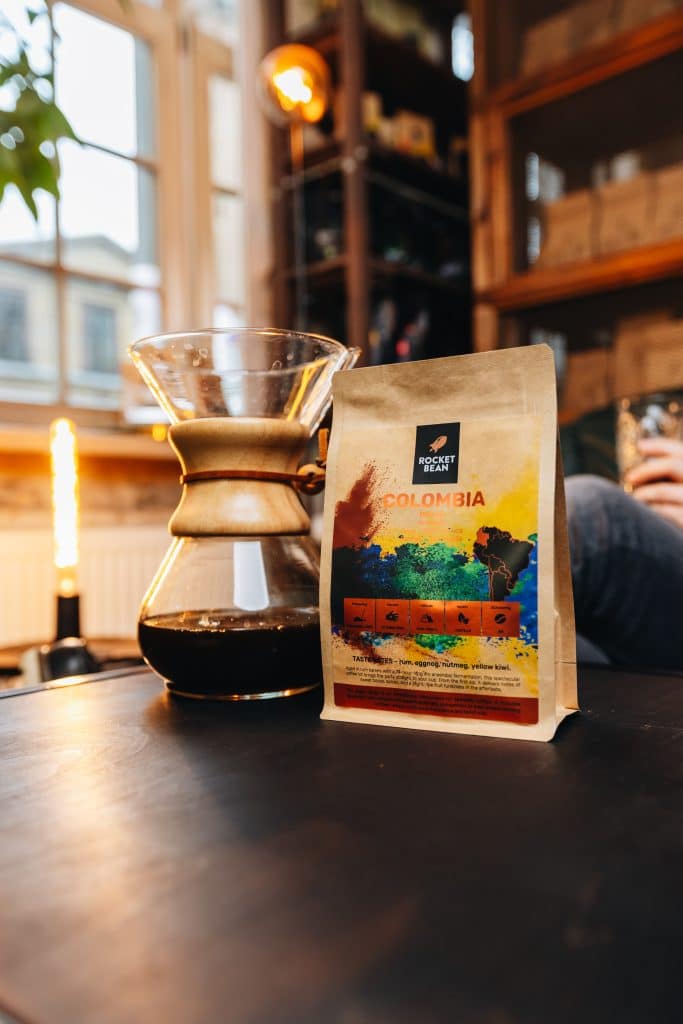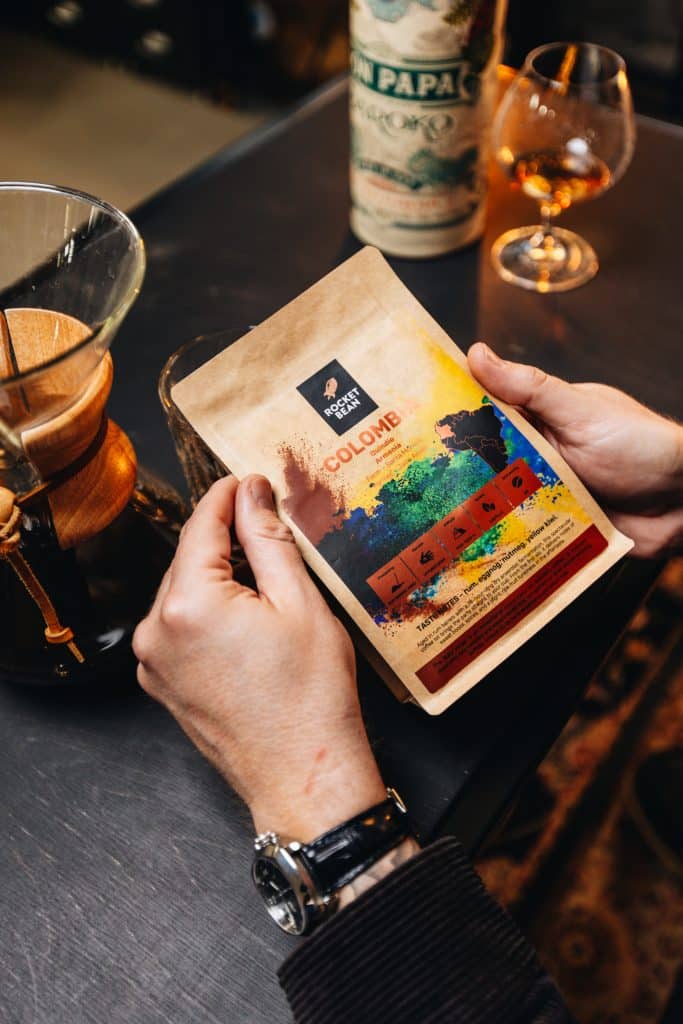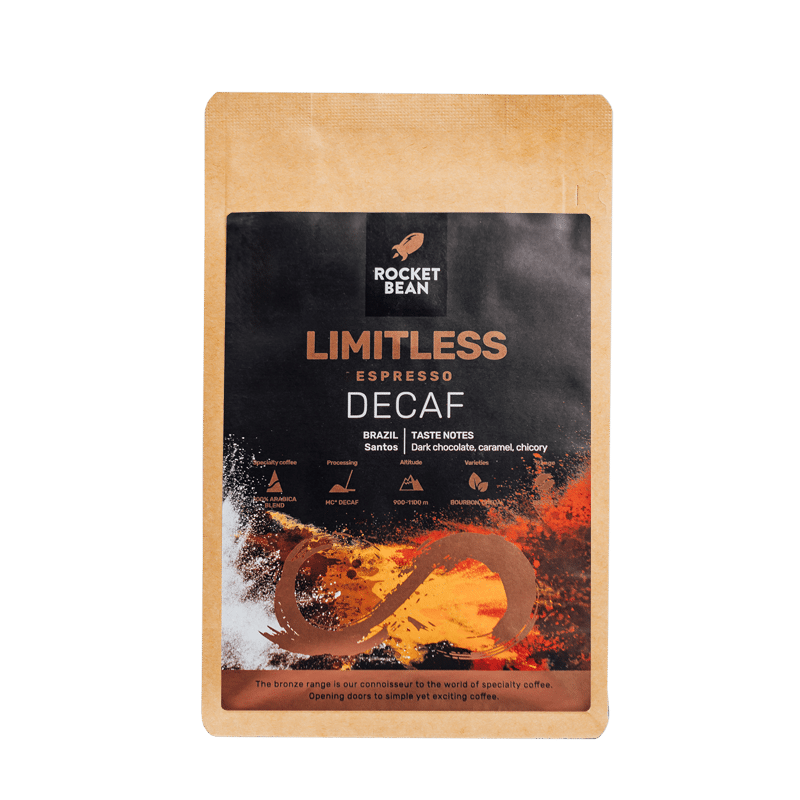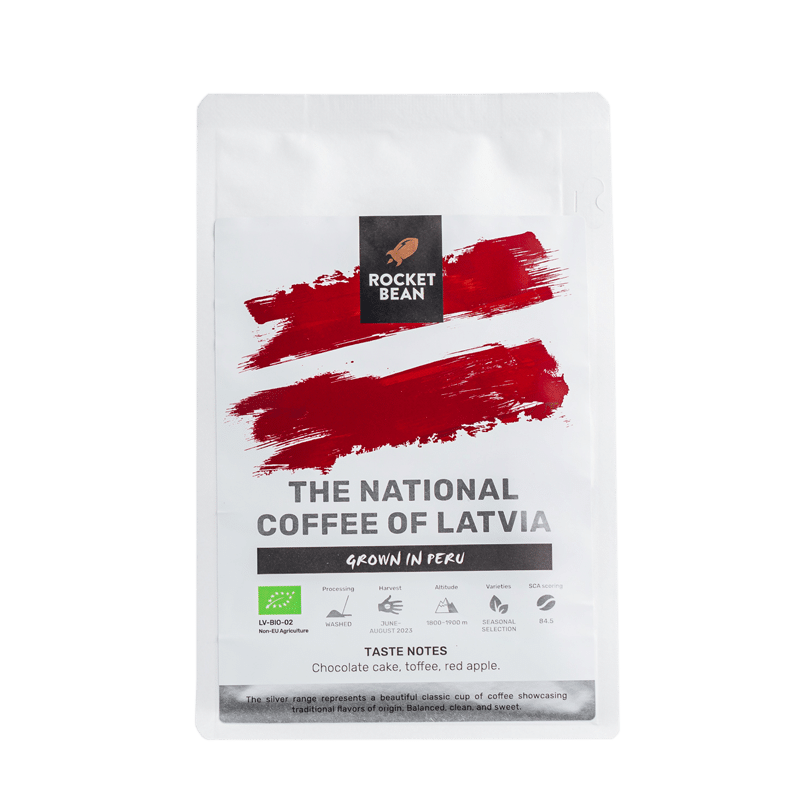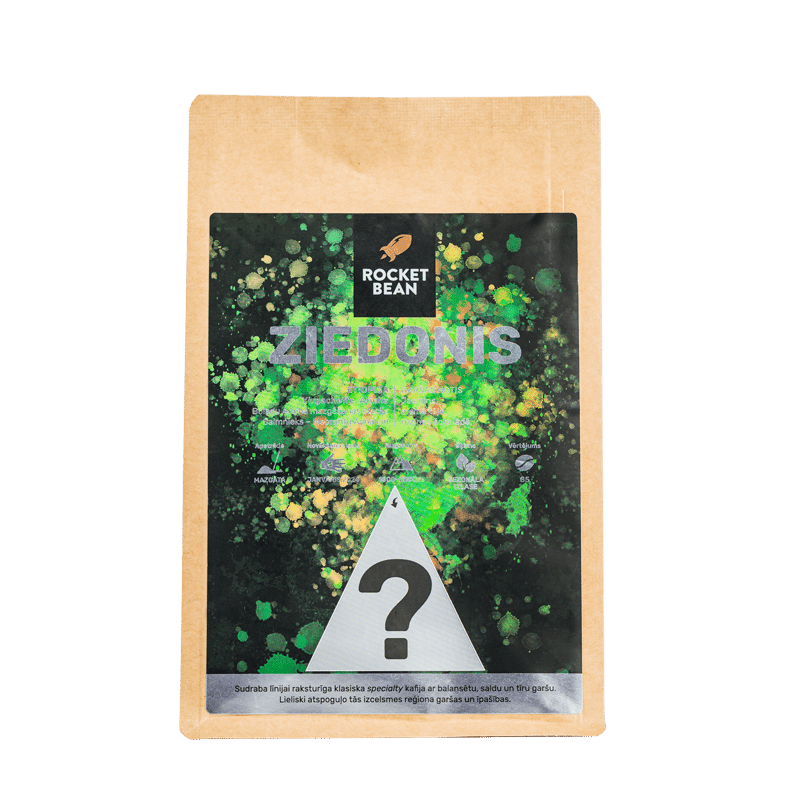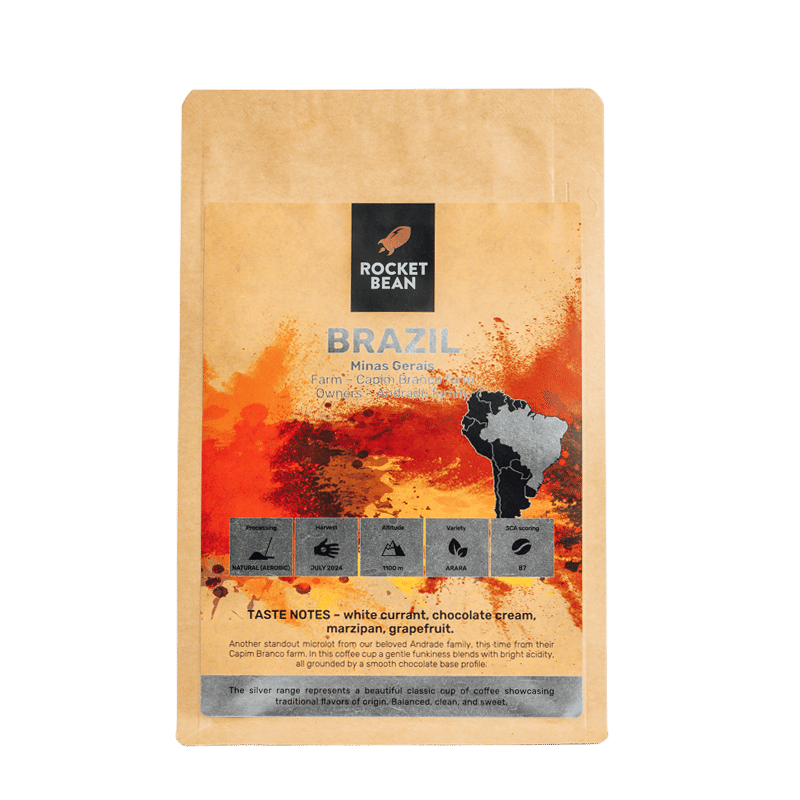Colombia | Quindio, Jairo Arcila, Rum Barrel Aged
Filter
- Country: Colombia
- Region: Quindio, Armenia
- Producers: Jairo Arcila
- Taste and Arome: Rum, eggnog, nutmeg, yellow kiwi
33,00 €
Processing
Natural
Harvest
October 2024
Altitude
1450–1500 m
Variety
Castillo
Scoring
88
Aged in rum barrels with a 74-hour-long dry anaerobic fermentation, this spectacular coffee lot brings the party straight to your cup. From the first sip, it delivers notes of sweet booze, spices, and a slight, ripe fruit funkiness in the aftertaste.
Region
Quindío, located in the western central region of Colombia, is a UNESCO World Heritage site known for its lush green mountains, scenic landscapes, and thriving coffee industry. Quindío is part of the Coffee Axis, also known as the Coffee Triangle, which produces a significant portion of Colombian coffee yearly.
The climate in the region is ideal for coffee cultivation, with average temperatures ranging from 18°C to 24°C year-round and consistent rainfall. The Volcanic soil of Quindío provides excellent drainage and aeration, enhancing the flavour profile of the coffee. The altitude, ranging from 1400 to 1800 meters above sea level, also contributes to the unique characteristics of Quindío’s coffee, which is highly prized globally.
Historically known for commercial coffee, Quindío has relatively recently shifted towards specialty coffee. This change is driven by young farmers who see the potential for a sustainable livelihood in high-quality coffee production. In the past, low prices for commercial grades drove many young people away from coffee farming and to try opportunities in the bigger cities. However, today’s growing specialty coffee market offers better opportunities, encouraging the next generation to stay on the farms and improve coffee quality.
Most of the farms in this region are family-owned farms, typically 2 to 5 hectares in size, and produce traditional Colombian varieties and exotic ones like Gesha and Pink Bourbon. This focus on quality has led coffee from Quindío to regularly place at or near the top of Cup of Excellence competitions. Also, farmers often compete locally to see who has produced the best coffee lots. It helps to foster a vibrant local culture dedicated to quality and growth.
Farmer
Jairo Arcila is a third-generation coffee grower from Quindio, Colombia. His first job was with the second-largest exporter in Colombia, where he worked as their mill manager for over 40 years until his retirement in 2019. In 1987, Jairo bought his first coffee farm, Finca La Esmeralda, where Jairo planted his first Caturra lot. He was fortunate to earn money by producing coffee on his farm and working full-time. Using his savings, Jairo gradually purchased five additional farms: Villarazo, Mazatlan, Santa Monica, Maracay, and Buenos Aires. During the harvest period, within these six farms, Jairo can provide numerous jobs to locals, which has a significant economic impact on their community. As a farmer and producer, Jairo has learned from his experience and his two sons. With their help, Jairo has improved coffee picking, sorting, and processing at his farms.
His sons have also guided and encouraged him in the production of exotic varieties such as Pink Bourbon, Java, Papayo, and Gesha across all his farms. This synergy of generations has resulted in fantastic coffees with astonishing flavour profiles enjoyed around the globe.
Processing
When Castillo cherries reach the perfect ripeness, they are harvested from the trees and moved to processing stations. The coffee cherries are then placed inside a fermentation bucket and dry fermented in an anaerobic environment. After 24 hours, the cherries are moved from the bucket to oak barrels that were previously used for aging rum. There, they undergo another 50-hour dry fermentation in an anaerobic environment. During this process, cherries are infused with flavors from the rum-soaked wood, developing boozy notes that give the coffee its unique character.
Afterward, the cherries are placed to dry on raised beds until the ideal moisture content is achieved. Next, the cherries are moved to another dry rum barrel, where they are aged for 10-20 days to further infuse with rum notes. Finally, all post-processing steps are done and coffee beans are packed into vacuum bags, and sent to Rocket Bean in 20 kg boxes.
